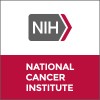
Genomic Structural Variation in Cancer Susceptibility
Breast CancerColon Cancer4 moreThis study will look for new types of gene changes that may be related to cancer in some patients. Some gene changes (mutations) are passed on from parents to offspring (child). Other gene changes are new and are seen for the first time in a child. They are not seen in the parent. Some of these gene changes may cause cancers in the offspring. We will look for gene changes by studying patients with cancer their parents and family members without cancer. In this study, we will be able to find gene changes that occur in the cancer patient but not in the rest of the family. Knowing the role that new gene changes play in cancer risk may help us find people at a higher risk of getting cancer.

New Therapeutic Strategies for Patients With Ewing's Sarcoma Family of Tumors, High Risk Rhabdomyosarcoma,...
Ewing's SarcomaNeuroblastoma1 moreThe prognosis for patients with metastatic Ewing's sarcoma family of tumors (ESF), rhabdomyosarcoma (RMS), and neuroblastoma (NBL) remains dismal, with less than 25% long-term disease-free survival. Though less grave, the prognosis for cure for other high-risk patients is approximately 50%. New treatment strategies, including the identification of highly active new agents, maximizing the dose intensity of the most active standard drugs, and the development of improved methods of consolidation to eradicate microscopic residual disease, are clearly needed to improve the outcome of these patients. This protocol will address these issues by commencing with a Phase II window, for the highest risk patients, to evaluate a series of promising drugs with novel mechanisms of action. All patients will then receive 5 cycles of dose-intensive "best standard therapy" with doxorubicin (adriamycin), vincristine, and cyclophosphamide (VAdriaC). Patients at high risk of relapse will continue onto a phase I consolidation regimen consisting of three cycles of dose-escalated Melphalan, Ifosfamide, Mesna, and Etoposide (MIME). Peripheral blood stem cell transfusions (PBSCT) and recombinant human G-CSF will be used as supportive care measures to allow maximal dose-escalation of this combination regimen.

Anti-GD2 3F8 Monoclonal Antibody and GM-CSF for High-Risk Neuroblastoma
NeuroblastomaThe purpose of this study is to be able to supply an experimental combination of drugs called 3F8 and GM-CSF (also called sargramostim) to patients with high-risk neuroblastoma who may benefit from treatment.

Neuroblastoma Precision Trial
NeuroblastomaThis proposal sets forth the platform for a Precision Medicine clinical trial through the New Approaches to Neuroblastoma Therapy (NANT) consortium. The plan is to utilize NANT's established multi-institutional infrastructure and Translational Genomics Research Institute GEM sequencing platform for acquisition and gene panel sequencing of relapsed biological specimens in relapsed/refractory neuroblastoma (rNB) including those obtained from the bone, bone marrow or soft tissue. Our primary aim is to identify subgroups of rNB patients who have potentially targetable genetic (ALK, MAPK pathway, Metabolic-related genes) and/or immunologic (tumor-associated macrophage infiltration and/or programmed death ligand [PD-L1] expression) biomarkers in rNB. Additional potential novel biomarkers will also be evaluated and reported in this cohort of patients.

Local Injection of Pain Medication to Reduce Pain After Bone Marrow Procedures in Pediatric Neuroblastoma...
NeuroblastomaThe purpose of this study is to identify whether or not the addition of a numbing medicine that is injected directly into the site of the bone marrow procedure can reduce pain and the use of opioid pain medication after bone marrow procedures. The addition of this medicine, called ropivacaine, is the experimental part of this study. This is the first time ropivacaine will be directly injected into the bone marrow site at MSKCC Pediatrics.

Decitabine Followed by a Cancer Antigen Vaccine for Patients With Neuroblastoma and Sarcoma
NeuroblastomaEwings Sarcoma3 moreThis treatment study for relapsed high-risk neuroblastoma, Ewings sarcoma, osteogenic sarcoma, rhabdomyosarcoma or synovial sarcoma involves an autologous cancer testis (CT) antigen specific dendritic cell (DC) vaccine preceded by decitabine as a demethylating chemotherapy.

Phase I and Pharmacokinetic Trial of Phenylbutyrate Given as a Continuous Infusion in Pediatric...
Brain NeoplasmsNeuroblastomaThis is a pharmacokinetic trial. Patients receive phenylbutyrate through a central venous catheter for each 28 day cycle. The first several days of drug administration should be inpatient. Cycles may be repeated if there is no tumor progression or dose limiting toxicities (DLT). There are no breaks between cycles. Once a minimum of 3 patients have completed at least 4 weeks of therapy without DLT, new patients will be entered at the next dose level.

Combination Chemotherapy Followed by Stem Cell Transplant in High-risk Neuroblastoma Patients
NeuroblastomaImprovement of event free survival of high-risk neuroblastoma patients by introduction of two additional topotecan containing chemotherapy cycles into the multimodal standard treatment (induction chemotherapy, myeloablative therapy, radiation, surgery as indicated, and consolidation therapy).

Pharmacokinetic Study of Doxorubicin in Children With Cancer
Wilms TumorNeuroblastoma2 moreAnalyze pharmacokinetics of doxorubicin in children with cancer. Furthermore investigate the predictive role of troponin and natriuretic peptides for anthracycline-induced cardiotoxicity .

Study of Fixed vs. Flexible Filgrastim to Accelerate Bone Marrow Recovery After Chemotherapy in...
Childhood Choroid Plexus TumorChildhood Medulloblastoma10 moreThis randomized phase III trial studies flexible administration of filgrastim after combination chemotherapy to see how well it works compared to fixed administration of filgrastim in decreasing side effects of chemotherapy in younger patients with cancer. Cancer chemotherapy frequently results in neutropenia (low blood counts) when patients are susceptible to severe infections. A medicine called G-CSF (filgrastim) stimulates bone marrow and daily filgrastim shots are commonly used to shorten neutropenic periods and decrease infections after chemotherapy. Since filgrastim is customarily used on a fixed schedule starting early after chemotherapy and there are data that early doses may not be needed, this study tests new flexible schedule of filgrastim to optimize its use by reducing the number of painful shots, cost of treatment, and filgrastim side effects in children with cancer receiving chemotherapy.
